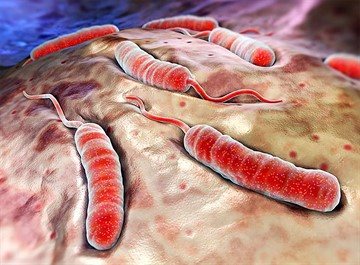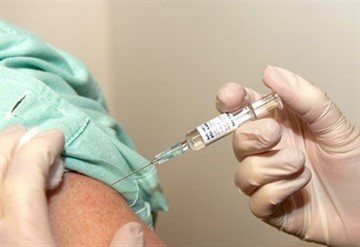India is an amazing country. Here, stunningly beautiful nature and a special spiritual atmosphere coexist with terribly dirty streets and neglect of basic hygiene rules.
The tropical climate, coupled with almost universal unsanitary conditions, creates an excellent situation for the spread of many infections. When planning a trip to this unusual country, you should find out in advance what you can get sick here and is it worth getting vaccinated in India?
What diseases are common in India?
Anyone who decides to visit India should understand that there is a health risk. The immunity of our compatriots may be powerless against the dangers that await it in this tropical “paradise.” In India, you can still catch plague or cholera, that is, those infections that have long been defeated in the West.
What diseases are common in India:
. The carriers of infection are special mosquitoes. Humidity and heat are ideal conditions for their reproduction. The risk of infection is especially high in densely populated areas of the country after the monsoon season (November-March). There is no vaccination against malaria. Therefore, you should stock up on proven remedies such as Doxycycline, Progualine or Chloroquine in advance. These medications should be taken before travel and for another month after it. If your temperature has risen significantly, then most likely an infection has occurred. Therefore, immediately go to your local hospital and get your blood tested. Remember that you should not take Aspirin if you have malaria;
malaria- Dengue fever is a severe flu-like infection. The spreader is an infected mosquito. The temperature does not subside for 2 or more weeks. There is no vaccination against the disease. Antibiotics help;
- hepatitis _ There are as many as 4 varieties of this viral disease. All of them “hit” the liver. The most common is hepatitis A. Infection occurs due to dirty water. There are anti-hepatitis vaccines;
- plague . Getting sick is unlikely, but possible. The carriers are fleas that parasitize gophers, hares, rats or camels. The disease is transmitted by the bite of an infected flea. Initial symptoms (on days 1-7) are high fever, body aches, nausea and swollen lymph nodes. If the infection is airborne, the lungs are damaged. Plague responds well to antibiotic therapy and can be completely cured if diagnosed in a timely manner;
- acute diarrheal infection. The causative agent of this pathology, Vibrio cholerae, having entered the body with water or food, begins to actively multiply, causing intestinal upset and vomiting in a person. The body quickly becomes dehydrated. The patient's health deteriorates sharply and muscle cramps begin. The body temperature is normal (even low), there is no abdominal pain. Without treatment, cholera can be fatal. To avoid infection, always wash your hands and drink water only from store-bought (not hand-bought) plastic bottles. Wash fruits and vegetables with it too;
cholera- antikylostomiasis and necatoriasis . The cause is small parasitic worms that are found primarily in the southern and central states. They enter the body with food or by gnawing through the skin. Infection manifests itself in the form of an allergic rash, then the digestive organs are affected. To avoid infection, always wear shoes and do not lie on the ground without clothes;
- paraganimosis . The disease is caused by a flatworm. Its larvae reproduce in shellfish, which feed on crabs and crayfish. By eating such an uncooked “delicacy”, a person can become infected. Symptoms in the acute phase: fever, chest pain, headache.
You can protect yourself from such a variety of infections by vaccination against hepatitis A and typhoid fever. This is the required minimum.
And, of course, you should purchase medical insurance, although this is not necessary, but traveling to India without it is extremely imprudent.
What vaccinations do you need to get before traveling to India?
Vaccination before traveling to India is not mandatory. But the peculiarities of the local climate and lifestyle are such that it is better not to refuse vaccination. Doctors recommend 10 injections, which, of course, is too many. In addition, the vaccination schedule for all drugs is different and requires a certain time, and the decision on vaccination, as a rule, is made immediately before the trip.
It makes more sense to get a few of the most necessary vaccinations, there are only 6 of them:
- jaundice (hepatitis A) . This vaccination should be given if the tour takes more than a month. The very first injection will provide protection against infection for a whole year. Revaccination follows after 10 years. If the trip is short, it is better to get vaccinated with immunoglobulin. But immunization may not be done if the blood has the required antibody titer, which can be checked with a special blood test. Post-vaccination reactions are insignificant. Recommended vaccines: Russian Hep-A-in-VAK, French Avaxim and British Havrix;
- typhus _ This bacterial disease is also common in India. Infection is caused by dirty water + lack of sewage systems. Vaccination takes place with one injection. Immunity is formed in 10-15 days and lasts for 5 years. In our country, 2 types of drugs for typhoid fever are licensed. These are the French Tifim Vi and the domestic Vianvac. Unfortunately, there are no vaccines for paratyphoid A and B;
- dysentery . The reason is the same - lack of sewerage. Immunization is carried out with the drug Shigellvac, which protects only against Sonne dysentery. There are no vaccines for other types of disease. Children as young as 3 years old can be vaccinated. Immune protection lasts for a year;
- rabies _ This vaccination should be done if communication with animals is expected. The course consists of 3 injections: 0-7-21 days. That is, vaccination will take almost a month, so you should think about vaccination in advance. Protective immunity lasts 3 years. Vaccines: German Rabipur and domestic KAV;
- polio . To be on the safe side, you can get this vaccination. Allergic reactions are possible. Vaccines come in the form of drops (oral) or inactivated (injections);
- meningitis . Another recommended vaccination. One-time immunization, protection for 5 years. In our country, 2 domestic products are used: Meningococcal vaccines: A and A+C, as well as the French Meningo A+C.
Start immunization 2 months (or better yet, even earlier) before your planned departure, and complete the procedures no later than 14 days. This is necessary so that the body has time to form an immune defense.
Is it necessary to get a yellow fever vaccine before traveling to Goa?

For most Russians, holidays in India are the beaches of Goa. Indeed, that state is considered the most prosperous in terms of the epidemic situation, so vaccination with all the vaccinations listed may not be necessary. But is it worth the risk?
Doctors are confident that immunization is necessary. For tourists there is the concept of “mandatory” vaccinations. These are injections for which a certificate is required to enter the destination country.
For example, a certificate of vaccination against yellow fever (YF) will be required from residents of those regions where this disease is common . Since this virus does not exist in Russia, our compatriots are usually not asked for a certificate.
But if a visit to India is planned after staying in countries where YF is endemic, then a vaccination certificate may be required. Vaccination is carried out in one dose. Protection lasts for 10 years.
Necessary cosmetics
To properly pack for India, you need to take the most necessary personal care products and cosmetics. First of all, you will need a sunblock with a factor of 40 or 50. Remember: in almost all of India the sun is simply merciless, especially from 12 to 17 hours. At this time, the temperature in the shade can reach 35-37 degrees, so the cream must be applied to all exposed areas of the body.
In addition, take on the road:
- sunburn remedy;
- hygienic lipstick;
- cotton swabs and gauze;
- several packs of wet wipes;
- mosquito cream (repellent);
- set of toothpicks.
Where can Russians get vaccinated, and how much will it cost?
You can get vaccinated at a clinic or commercial medical center. In Moscow, for example, there is a Central Vaccination Point, specially created for those traveling abroad.
If vaccinations are included in the National Calendar, then most of them are given free of charge, the rest - for special indications:
- vaccination against hepatitis A. If you don’t remember whether you received this vaccination in childhood, donate blood for antibodies. The cost of the test is 300 rubles. If you have to get vaccinated, the price per injection will be 1,700 rubles;
- from typhoid fever . For Russians, this vaccination is not mandatory. It is carried out if necessary: when a person travels to African countries or to South America or Southeast Asia. A one-time injection will cost 1000-1300 rubles;
- from dysentery . Price of 1 dose – 1100 rubles;
- from rabies . The cost of 1 injection is 500-1100 rubles;
- from yellow fever . The price of the injection is 2000-2100 rubles.
The result is an amount of 4-7 thousand rubles.
What to take from clothes?
Putting together a wardrobe is the easiest thing to do. Clothes prices in Indian markets are low, so don’t take too many items. If necessary, you can buy everything on the spot. However, pack in your suitcase:
- a couple of T-shirts;
- several light summer dresses, with long or short hemlines;
- shorts;
- several pairs of socks, 2-3 changes of underwear;
- summer sandals and a pair of light closed shoes;
- light fabric trousers.
There will be no problems with children's clothing either. It costs mere pennies in India and is made from linen and cotton of good quality. If you don’t know what clothes to take for your child on a trip, take only a Panama hat and children’s sandals. You can buy everything else at the nearest market.
What to take on a trip to India to protect against bad weather? Of course, a raincoat or an umbrella. They will definitely come in handy if you are planning to visit the mountainous or tropical regions of the country, for example, Kerala. For a trip to the mountains, bring a warm sweater and cap.











